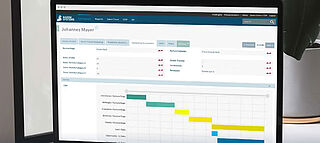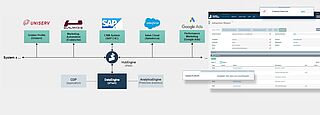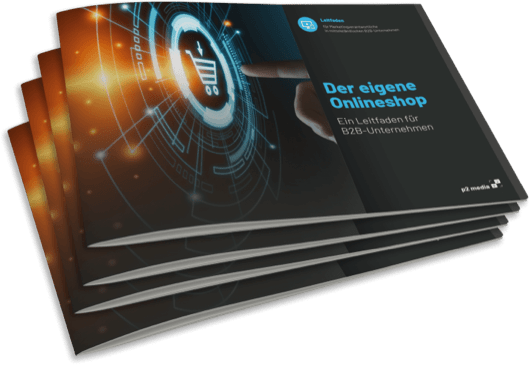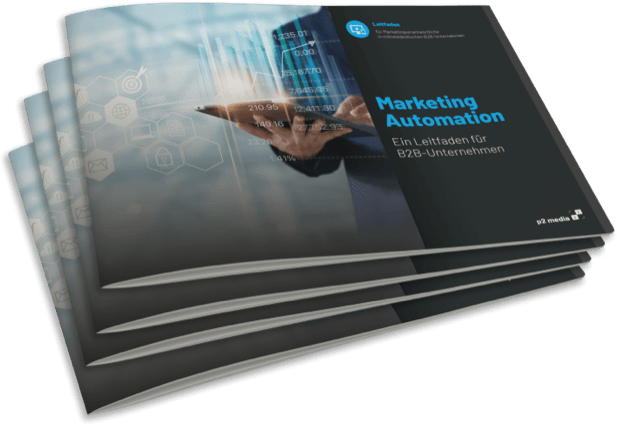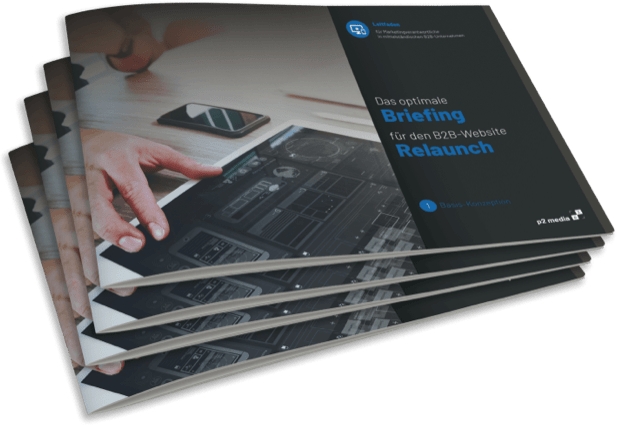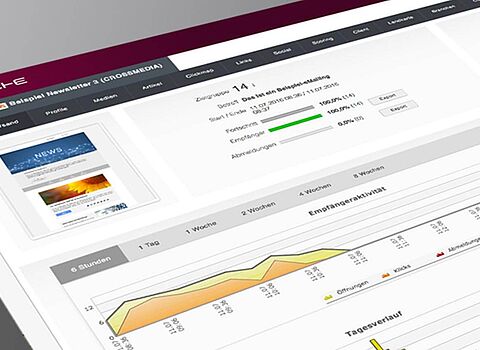Significantly increasing sales success and ensuring maximum process efficiency: These are undoubtedly the core concerns of every sales manager.
However, salespeople know that such goals are unfortunately much more difficult to achieve than might be assumed on the surface. Conventional sales work usually requires enormous manpower, which is primarily spent on the advantageous recording and use of customer data and communication.
Those sales people who always offer the right answers at the right time based on data and who really know the challenges or needs of their target persons well, can effectively guide them towards closing and always have the best quota. Creating such conditions is associated with immense effort in conventional sales structures.
The solution: Robotic Selling using artificial intelligence (AI), machine learning and a customer data platform (CDP)!
Robotic Selling actually involves automated sales preparation with the help of software robots that can use huge amounts of data for sales or target-oriented communication. Ideally, they obtain the necessary information from a CDP. The result: powerful sales automation and incredible efficiency.
As already stated in our article Artificial Intelligence - B2B Marketing and Sales, AI and Machine Learning have long been on the minds of sales managers. However, there is still a lack of implementation in many places.
The fact that especially in sales, potential is often not only unused, but also unrecognized, is the reason why we are taking this opportunity to take a closer look at the opportunities for sales in the use of intelligent technologies.
How does Robotic Selling work?
Robotic Selling is fundamentally about automating the sales process, identifying the best sales opportunities in each context, and thereby generating a significant increase in efficiency.
To achieve this, Robotic Selling (ideally) makes use of a wide range of data from CRM, ERP, personal sales calls, website, social media and all other conceivable sources or touchpoints through which information is transmitted by customers.
Corresponding data is synchronized within a customer data platform. It can now be processed in different directions using AI, machine learning and predictions. For example, process automation in lead scoring or clustering can be achieved in order to determine the perfect measures for customer acquisition in sales on the basis of this. Robotic Selling automatically prepares the perfect contact with regard to the individual customer's needs.
All in all, the data and its automated processing provide a very detailed buyer picture in a highly efficient manner, from which intelligent technologies can determine purchase probabilities and even recommendations for the optimal processing of individual target customers with a high degree of reliability.
What are the key benefits of Robotic Selling?
The use of Robotic Selling can mean an enormous increase in efficiency of typical processes in sales.
- Recurring tasks and/or tedious standard tasks are effectively taken over by the technology. In doing so, software robots make fewer mistakes or bring a higher work accuracy than humans.
- In addition, automated processes within the system are always adequately documented and tracked and can therefore meet the growing compliance requirements.
- Robotic Selling can be implemented relatively quickly and can even be integrated into existing and maintained systems or shared with them.
- By optimizing processes with the help of an intelligent software robot, salespeople can concentrate on really important tasks, namely intensive personal new customer acquisition and existing customer care.
- This results in a more secure direct increase in sales - but companies can also benefit considerably in the long term, because the fact that sales teams always know exactly what their target group needs and offer targeted solutions also has a strong branding effect. Customers are convinced in the long term, buy again and again and, at best, actively recommend the services of the company in question to others.
What is a Customer Data Platform (CDP)?
CDPs have the purpose of bringing together and consolidating customer data from a wide variety of sources in the company - they serve to build up and enrich customer profiles.
Central synchronization and control is extremely relevant today, as sales work with a multitude of individual tools. At the same time, customers are using more and more channels to obtain information before making a purchase and may have multiple touchpoints with the same company.
As a result, businesses receive data from a variety of sources - from website and email marketing tracking, to social media and online store insights, to information from ERP and CRM.
Without a CDP, there are numerous disconnected, inconsistent data sets. In order to be able to use these for one's own purposes, corresponding systems must be continuously integrated or synchronized. Of course, this means a huge effort. If the data is not adequately maintained, the isolated inventories become increasingly distant from one another. As a result, incorrect entries and duplicates accumulate. Ultimately, both the master data and the behavioral information of customers are, in the worst case, incomplete and/or incorrect. This can even lead to a deterioration of the customer experience and an increasing churn rate.
A customer data platform, on the other hand, ensures that all data potentials can be utilized and the existing information is cleansed or ideally prepared.
Customer data from all relevant operational systems, online and offline channels and company divisions converge in the CDP.
This information in turn forms the basis for enrichment, segmentation and forecasting in the CDP. Finally, CDP can play out relevant results and trigger specific actions. There is great potential here for a wide range of business areas.
With a CDP, it is possible to integrate a wide variety of systems for many scenarios and to map diverse functions. For example, Uniserv Customer DataHub, Google Ads, Evalanche Marketing Automation, SAP CRM, Marini DataEngine and Marini AnalyticsEngine can be integrated for an optimized organization of marketing and sales.
Even those who initially want to focus on an entry on a smaller scale can benefit from a CDP. In many companies it is important in this context that for the use of a CDP an abolishment of existing systems is by no means a prerequisite! It is also irrelevant whether the applications already in use are already in the cloud or are still operated on-premise.
The integration of existing systems can be done comparatively quickly today: Via iPaaS applications (Integration Platform as a Service), synchronizations between corresponding applications are easy to implement. No more cumbersome software development is necessary. This even applies to exotic systems or in-house developments.
There are practically no limits to data consolidation and use. All systems that are important in marketing and sales can be connected to CDP - even retroactively: no matter whether web analysis, performance tools, LinkedIn or webinar platforms.
Why does the use of a customer data platform make sense in terms of collaboration between sales and marketing?
At best, the Customer Data Platform builds another bridge between sales and marketing. The unquestionably important cooperation and closely linked work of these departments is optimized by the jointly used data.
The benefits of a CDP for marketing are clearly more apparent to many managers than its advantages for sales. De facto, however, Sales and Robotic Selling actually benefit from a lot of Marketing's data and activities.
In order to be as effective and efficient as possible, insights into customer behavior and customer needs must flow from marketing to sales - and vice versa.
When silo thinking is broken down, companies can particularly benefit from the advantages of using a CDP and Robotic Selling. Appropriately integrated systems result in broadly automated processes that lead to a significant increase in process efficiency and effectiveness across departments. This requires consistent data, transparency and comprehensive customer insights.
CDPs can be designed in many different ways. As a rule, they focus on one or more of the following operational areas:
- Operational: marketing and sales
- Strategic: Management of marketing and sales
- Management
What basis must a company create for Robotic Selling?
For ideal robotic selling, all data from all relevant sources or the relevant touchpoints should be identified and integrated into the customer data platform.
This requires bidirectional synchronization between all important systems. Today's CDPs follow the "Integration Platform as a Service" (iPaaS) approach. This approach allows companies to eliminate annoying data silos without gaps and still use their existing systems as well as any external micro-services. Under this approach, data sources and applications can also be added very easily at a later date - if desired.
In addition to central sales-relevant data, such as from CRM, ERP or other sales systems, ticketing solutions should ideally also provide information in the service. This can be very valuable for cross-selling and upselling. The more differentiated the integration of important data-providing tools is, the more stable the basis for data analyses and for the intelligent automation of processes.
FAZIT
A modern Customer Data Platform, such as the CDP from Marini Systems, creates a highly useful connection between marketing, sales and last but not least (potential) customers.
It is a highly flexible construction kit with which a company can integrate exactly the systems and - in connection with Robotic Selling largely automated - create precisely the processes and solutions for sales that it needs.
Our support around the topic of marketing automation:
- Development of a custom-fit online marketing strategy, definition of smart goals, determination of your desired target groups by means of buyer personas and coordination of meaningful KPIs.
- Setting up targeted Nurture processes to enrich customer profiles.
- Consulting and implementation ofmarketing automation software that meets the requirements of the GDPR.
- Extensive workshops to train your team on Buyer Personae, Nurturing processes.
For success-oriented optimization of digital sales, we are also happy to support you on the subject of lead management.
Oliver Parrizas will be happy to answer any questions you may have on the subject. +49-800-911-91-91
